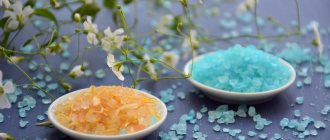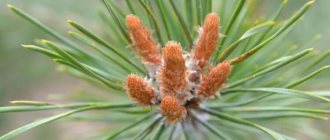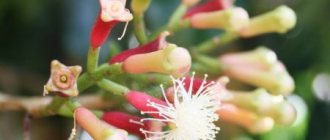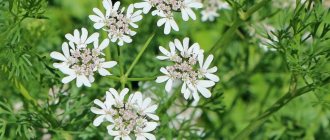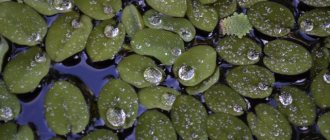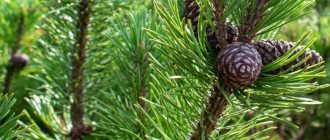Scleroderma (Latin scleroderma, “hard skin”) is an autoimmune disease that is characterized by progressive fibrosis of the skin and internal organs and the occurrence of vascular lesions. Fibrosis of the skin and organs leads to their significant thickening and roughening, which is why scleroderma is often called a disease that “turns people to stone.” There are two forms of the disease: systemic and focal, which differ in clinical course and symptoms.
The causes of scleroderma still remain unknown. Doctors point to the role of genetic factors, hormonal levels (due to the frequent occurrence of systemic scleroderma in women), as well as environmental factors (exposure to certain chemicals). Immune disorders have a certain effect, in which cells of the immune system begin to produce antibodies directed against their own body.
Symptoms and varieties
- Focal scleroderma
- Systemic scleroderma
Treatment
- Vitamins
- Oils
- Baths
- Aloe and honey
- Onion compress
- Herbs for systemic scleroderma
- plaque (discoid) scleroderma - changes of different sizes and shapes, initially they are surrounded by a halo of inflamed skin, then the inflammation disappears, and the rashes themselves persist for several months or even years;
- White spot disease – small white rashes all over the body;
- nodular scleroderma - changes are extensive and may involve almost the entire skin,
- linear scleroderma - affects the limbs and interferes with their normal movement;
- idiopathic atrophoderma Pasini-Pierini.
All these varieties have the same symptoms - hardening of connective tissue, skin and subcutaneous tissue without the participation of internal organs.
Systemic scleroderma
Systemic scleroderma is a connective tissue disease. It is manifested by progressive fibrosis of the skin and internal organs, which leads to their failure. Women get sick 3-4 times more often than men. The peak incidence occurs between 30 and 50 years of age.
Symptoms of systemic scleroderma:
- Raynaud's phenomenon is paroxysmal spasms of the arteries of the hands under the influence of cold or for no reason, which at the initial stage leads to paleness of the fingers. After a while they lose sensation and then become red and warm. These symptoms appear several years before the full development of systemic scleroderma;
- skin lesions, which are manifested by fibrosis and hardening, can affect the fingers (patients find it difficult to bend and straighten them, sensitivity is lost, cuts heal poorly);
- deterioration of facial expressions (appearance takes on the character of a mask, there are no wrinkles);
- general symptoms such as pain, joint swelling, morning stiffness and limited mobility;
- disappearance of the taste buds of the tongue, which leads to loss of sensitivity to tastes;
- gingivitis (can lead to tooth loss);
- esophageal fibrosis (can lead to dysphagia);
- pulmonary fibrosis (manifested by shortness of breath and chest pain);
- chronic dry cough;
- myocardial fibrosis (can lead to conduction disturbances and cardiac arrhythmia).
Systemic scleroderma has a long-term, severe course. It often leads to significant impairment of the functions of the entire body, many complications (especially gastrointestinal and pulmonary symptoms) threaten permanent disability and even death.
Treatment
Modern medicine does not have in its arsenal drugs that could effectively inhibit or at least slow down the development of the disease. However, there are drugs that prolong the life of patients and reduce the effects of organ damage. In particular, traditional medicine can offer such drugs.
We also list general recommendations.
- Patients should ensure the necessary hydration (moistening) of the skin.
- Do not expose your hands and feet to cold temperatures.
- It is very important to quit smoking.
- The diet of patients with scleroderma should be based on easily digestible foods and contain sufficient amounts of vitamins.
Vitamins
Scleroderma in children is successfully treated with vitamins E and D3. In general, this disease in children goes away on its own over time, but to speed up the process, include foods with these vitamins in your diet. Give the patient daily fish oil (in capsules or in pure form), wheat germ, oatmeal, liver and sea fish.
Adults also need to pay attention to these vitamins to reduce unpleasant symptoms and prolong life.
Oils
For any type of scleroderma, it is very important to care for the skin and soften it. Therefore, you should lubricate the affected areas with any oil at least three times a day - olive, almond, corn, grape seed oil.
You can also prepare St. John's wort oil. It not only softens the epidermis, but also removes any inflammation, protects against infection, and increases local skin immunity. To prepare the oil, take 150 g of fresh herb or 100 g of dry St. John's wort herb. Pour it into a glass bowl and add 500 ml of olive or vegetable oil. Place the jar in a sunny place and leave for 10 days, shaking occasionally. Rub the strained oil into your body 2-3 times a day.
Baths
Warm baths (temperature 32-40 C) improve blood flow and tissue nutrition, help reduce stiffness of muscles and joints. With their help, you can treat any type of scleroderma. We will offer several bath recipes.
- Oat straw baths. Useful not only for the skin, but also for internal organs (especially if systemic scleroderma has led to a deterioration in the function of the lungs and esophagus). Boil a handful of oat straw in 2 liters of water, strain and pour into the bath. Repeat the procedure every 2-3 days, after the bath, lubricate your entire body with oil or cream, and go to bed.
- Baths from geranium leaves. Geranium has biologically active substances that have a beneficial effect on the skin with scleroderma. It is recommended to undergo a course of 10 such procedures every six months. Take 100 g of crushed leaves and stems of indoor geranium, boil in a small amount of water, pour the resulting broth into a full bath. It is advisable to lubricate the skin with geranium oil (sold in pharmacies) after bathing.
- Pine baths. They not only care for the skin, but also calm the nervous system (this is very important for autoimmune diseases), and also support lung function (in the later stages of systemic scleroderma). Any needles are suitable for treatment - young spruce and pine cones, chopped juniper, fir. Boil the raw material in a small amount of water and add to the bath. You can also add a few drops of pine needle essential oil.
- Milk and honey baths. Quickly restore the beauty of the skin, indicated for focal scleroderma. For one bath you will need 3 liters of homemade milk and a glass of honey. Dissolve the ingredients in water and bathe.
- Birch leaf baths. They are used in cases where the disease has caused complications in the joints. Boil a handful of dry leaves in water for 5 minutes, strain the broth and pour into the bath.
Aloe and honey
Focal scleroderma in children and adults will significantly decrease or go away completely if you lubricate the affected areas of the skin several times a day with fresh aloe juice mixed with honey in equal proportions.
Onion compress
External cutaneous scleroderma can be treated with a special compress prepared with onion. So, bake a medium-sized vegetable in the oven until soft. Mash the onion with a fork, add a tablespoon of natural honey, a tablespoon of sour cream and a teaspoon of propolis alcohol tincture. Apply the resulting mixture to the affected areas in the form of a compress, cover the top with a gauze bandage. It is recommended to carry out a course of 10 such compresses so that the result is truly noticeable.
Herbs for systemic scleroderma
Since this type of scleroderma is a severe autoimmune disease, it must be treated with anti-inflammatory drugs and immunosuppressants. Many herbs have these properties, so you can do without expensive medications.
- Sakhalin buckwheat. This plant has helped many patients alleviate their condition with scleroderma. We suggest preparing an alcohol tincture. Combine a tablespoon of chopped herb with a glass of vodka, keep the mixture in a dark place for 2 weeks, then strain and take 10 drops in the morning and evening after meals.
- Soap herb (Saponaria officinalis) is another effective remedy for our problem. In this case, you will need the root of the plant. Brew it in a thermos (3 tablespoons per liter of boiling water, leave for 2 hours) and drink in sips throughout the day. The course of treatment is 3 weeks, then you need to take a break for 3 months.
- Harpagophytum is not only an excellent immunosuppressant and anti-inflammatory agent. This plant maintains joint mobility, which is very important for scleroderma. To treat the disease, you will need dried harpagophytum root. Grind it into powder and mix in equal proportions with natural honey. Take a teaspoon of this mixture every morning after waking up with clean water.
- Rhubarb wavy - with systemic scleroderma supports the function of the heart muscle, joints and kidneys. It is recommended to constantly drink tea from this plant (brew a teaspoon of rhubarb in a glass of boiling water).
You can also boost your immunity with teas made from hawthorn, echinacea, chamomile and sage. You can mix all these plants in equal parts and prepare healing drinks from them.
Write in the comments about your experience in treating diseases, help other readers of the site! Share the material on social networks and help your friends and family!
Scleroderma is a little-studied chronic disease in which the connective tissue suffers, undergoing inflammation and fibrosis (scarring): blood vessels narrow, the skin hardens, the gastrointestinal tract, heart, lungs, kidneys and musculoskeletal system can be damaged. The disease is relatively rare and belongs to the autoimmune type (when the body is negatively affected by its own defense mechanisms). The exact reasons for its occurrence have not been established. The disease occurs in different age groups, most often in childhood and between 30–50 years, with three quarters of patients being women. A detailed description of the disease dates back to the 17th century, but the term “scleroderma” appeared much later - around the middle of the 19th century, and the study in the aspect of rheumatology began in the 50s of the 20th century.
There are two main types of scleroderma - systemic and focal - differing in their symptoms and the extent of their course. If the common form progresses, the disease can be fatal. Medicine at the moment can only make the lives of patients easier and fight the symptoms of the pathology; it is completely impossible to recover from collagenosis.
Causes
The disease is not hereditary, but genetic defects definitely play an important role in its occurrence. The mechanisms for triggering the process (manifested in excess collagen) are not yet completely clear, but there are etiological factors:
- stress;
- hypothermia and frostbite;
- endocrine system disorders;
- infectious diseases and viruses (especially cytomegalovirus);
- vibrations during the production process;
- radiation, chemotherapy for oncology;
- exposure to organic solvents, quartz and coal dust, poor ecology;
- injuries, etc.
The common point for all the indicated prerequisites is suppression of the immune system and disruption of its functions.
Treatment of scleroderma
Treatment of the disease is aimed at preventing cardiovascular complications and eliminating fibrous formations
During the treatment process, it is very important to exercise control to prevent the spread of scleroderma. It is necessary to follow a diet, do not overcool, stop smoking and caffeine-based drinks, and avoid vibration
Physical therapy, massage, and acupuncture are useful.
The disease is difficult to treat; in order to be successful, it must be long and meticulous. It has already been said that the true cause of the disease is unknown today, there are only assumptions. Consequently, there is no specific treatment for scleroderma; there are only accompanying ones that help smooth out the symptoms of the disease, but not the cause of the disease as a whole. Surgery (excision of affected areas of skin) does not stop the disease.
Patients are advised to protect their skin from cold, eat a balanced diet, quit smoking, coffee and alcohol, avoid overeating and overwork, stress, and vibrations.
Drug treatment includes the prescription of corticosteroids, vasodilators, antibiotics, immunosuppressants (suppress the immune system and, therefore, the body’s autoimmune reaction, which was mentioned above). Physiotherapeutic procedures and treatment in sanatoriums (Sochi, Matsesta) are indicated.
Ozone has proven itself well in the treatment of scleroderma (ozone therapy). This method helps improve the immune system and reduce inflammation.
For focal scleroderma, a sulfur shower or sulfide, pine, sodium chloride baths will be useful; for systemic use - radon baths.
Ultrasound and electrophoresis, massage, physical therapy are indicated.
In the early stages of the disease, a method such as hemopuncture has proven itself to be excellent. It is based on the fact that blood is taken from a patient’s vein and injected into certain points. Before this, the blood is modified (that is, a kind of immunomodulator is obtained from the patient’s blood). As a result, the body’s own autoimmune reactions weaken, and the immune system becomes better; the body effectively fights infections.
Herbal medicine has also proven itself well, although due to insufficient knowledge of the disease, there are not a huge number of herbal recipes. Of course, it is best to combine herbal treatment with drug treatment.
Classification and characteristics
Symptoms of the disease manifest themselves in different ways: they are determined by the localization of the lesions - from the epidermis to the internal organs and tissues. In medicine, focal and systemic forms of the pathological process (with subtypes) are diagnosed, differing in the degree of distribution and, accordingly, the number of symptoms:
- systemic - damage to many tissues and organs, diffuse - its rapid, very dangerous variety;
- limited (focal) – local damage to the skin, which is best treated;
- plaque – a type of focal scleroderma with the appearance of dense, clear spots (often at the site of injury);
- linear - a variety localized on the child’s forehead;
- generalized - a form with a wide area of damage, much more common in children, but there is a possibility of its occurrence in adults.
There are natural external symptoms (shown in the photo), among the first is Raynaud's syndrome. It is characterized by painful spasms of blood vessels in the skin of the hands in stressful situations and during hypothermia, clearly defined pallor and blue discoloration of the skin. Once the attack has passed, it leaves intense shades of red on the limbs and fingers. The tips of the fingers become ulcerated over time, then scar, and then ulcers may appear again.
Subsequently, other pathologies appear. The skin of many patients is exposed to damage that occurs in stages. First, there is swelling of the hands, which does not allow you to clench your hand into a fist. Then comes compaction, discoloration, and then the tissue atrophies. Facial features are transformed: the nose becomes sharper, folds appear around the mouth, and finally facial expressions are reduced. The extreme phalanges of the fingers are deformed, shortened, small joints and ligaments bring them into a frozen position, limiting extension (flexion contractures). Weight decreases; in the systemic form, susceptibility to chills and decreased sensitivity of the skin are observed.
The disease is also characterized by damage to joints and muscles. There are permanent morning pains due to tightness of the tendons, and sometimes inflammatory swelling. The gradual destruction and atrophy of muscles (myopathy) makes itself felt by weakness and fatigue.
Most patients experience a decrease in the tone of the esophagus (sphincter), as a result of which swallowing becomes difficult and heartburn occurs. The action of hydrochloric acid forms ulcers in the digestive organs, the mucous membrane of the esophagus succumbs to metaplasia - a precancerous disease that can develop into adenocarcinoma (cancer). A disorder of the gastrointestinal tract leads to poor absorption of nutrients, abdominal discomfort and stool disorders, including fecal incontinence.
In 80% of cases, the disease also affects the lungs (the development of fibrosis, shortness of breath), inflammation occurs, complicated by scarring, and the risk of cancer increases. With pathological changes in the kidneys, dangerous and fatal damage to their blood vessels can occur - nephropathy. Damage to the trachea, oral cavity and vagina, and deterioration of visual sensations are also possible. Diseases of the cardiac membranes, rhythm disturbances and decreased contractility (even asymptomatic), and negative changes in the functioning of the left ventricle are also detected.
Symptoms
Symptoms of scleroderma can vary between patients. The most common manifestations are thickening and thickening of the skin on the fingers, toes and face. The skin may thicken during the first two to three years of the disease. After this, the thickening usually decreases. The main symptoms of scleroderma include:
- Swelling, stiffness, or pain in your toes or hands, or face.
- Tingling, numbness, or swelling of the skin.
- Change in skin color.
- Sensitivity to cold and intermittent and transient paleness of the fingers (Raynaud's syndrome), accompanied by pain in the fingers.
- Red spots on the fingers, palms, face, lips, or tongue from persistently dilated capillaries (telangiectasia).
- Sores or wounds on the fingertips or elbows.
- Loss of skin's ability to stretch.
- Itching.
- Joint pain
- Fatigue.
- Curling of fingers (sclerodactyly).
- Presence of calcifications under the skin
- Disorders of the digestive system such as heartburn, difficulty swallowing, prolonged retention of food in the digestive tract due to reduced activity of intestinal smooth muscles.
- Loss of motor function of the hand due to tightening of the skin on the hand and fingers.
- Shortness of breath associated with damage to the lungs and heart.
Diagnostics
Identifying the disease is difficult because the symptoms are similar to many other diseases. For this reason, similar diagnoses are first rejected and the main signs are assessed:
- Structural and color changes in areas of the skin.
- Deterioration in the functioning of muscles and joints.
- Presence of Raynaud's syndrome.
- Circulatory disorders.
- Disorders in the functioning of the gastrointestinal tract and other important systems that are not chronic.
Three or more points provide a primary diagnosis after examination, questioning, laboratory and other examination methods (ultrasound, radiography, CT - in the case of a systemic form). Monitoring of the patient continues to adjust the assessment of his condition. It is important to seek medical help in a timely manner, because in this case the consequences can be eliminated.
Focal scleroderma: diagnosis
Diagnosis of focal scleroderma is based on the medical history, life history, complaints and clinical picture of the disease. This pathology should be treated and observed by a rheumatologist. To exclude concomitant diseases and contraindications, the patient should be consulted by the following specialists:
- Therapist;
- Cardiologist;
- Endocrinologist;
- Gynecologist;
- Neuropathologist;
- Gastroenterologist;
- Otolaryngologist.
To clarify the activity of the pathological process, as well as to exclude systemic hyperthermia, the following studies are prescribed:
- Laboratory examinations: OBC, OAM, biochemical blood test;
- Histological examination of the skin;
- Determination of antinuclear factor in the blood;
- Ultrasound of the abdominal organs, kidneys, thyroid gland;
- ECG;
- Chest X-ray;
- CT scan;
- Magnetic resonance imaging.
Therapy
Typically, treatment for scleroderma is long-term, sometimes lasting throughout life. The quantity and combination of drugs should be controlled by a doctor.
Medicines
Treatment for systemic scleroderma involves taking the following medications:
- Antifibrotic medications for blood vessels prevent spasms, the most effective of them are calcium antagonists (dihydropyridines, phenylalkylamines and piperazine derivatives).
- Antiplatelet agents are prescribed to prevent blood clots and help drugs that dilate blood vessels (for example, Acetylsalicylic acid).
- Antifibrotic therapy. Patients are often prescribed Penicillamine (Cuprenil), which inhibits the formation of collagen (the large dosage of which is still controversial).
- Anti-inflammatory treatment (Ibuprofen, Diclofenac, etc. in standard doses) is indicated to normalize the functions of the musculoskeletal system.
- Symptomatic therapy. If the lower segment of the esophagus becomes ill, prokinetics (for example, Domperidone) and fractional meals are prescribed. If the small intestine is damaged, antibacterial drugs are needed (Erythromycin, etc.).
- Ointments are used locally to treat the skin: Actovegin, Madecassol, Contractubex.
The focal form of the disease is treated individually. The main conditions in this case are:
- Anti-inflammatory therapy with local glucocorticoids.
- Immunosuppressive medications to suppress the body's defenses (including Methotrexate).
- Systemic treatment of linear varieties already in the first stages.
Physiotherapy
To weaken autoimmunity and for other related purposes, various methods are used:
- ultrasound procedures;
- heat therapy;
- massage;
- exercise therapy;
- laser therapy;
- mud therapy;
- hydrogen sulfide and radon baths.
Specialized sanatoriums are necessary for the rehabilitation of patients after a therapeutic course.
Traditional methods
Examination and full-fledged therapy are irreplaceable, but for scleroderma, treatment with some folk remedies can also be taken into account to relieve symptoms. These methods include:
- alcohol extracts of plant adaptogens (ginseng, rhodiola);
- decoctions of horsetail, lungwort, knotweed and herbal complexes for oral administration;
- ointments for external use containing wormwood and celandine;
- compresses with aloe juice (after softening), honey, onion and kefir.
First of all, it is necessary to identify the possibility of allergic reactions, seek advice from a doctor, take into account mixed reviews and only then make a decision.
How to treat systemic scleroderma?
Treatment of systemic scleroderma should be comprehensive and aimed at:
- inhibition of the intensity of collagen formation, activity of immune and autoimmune reactions,
- elimination of microcirculatory disorders,
- normalization of the functions of organs and systems,
- preventing damage to internal organs or eliminating them, taking into account the clinical course and stage of the disease.
The basis of the pathogenetic treatment of systemic scleroderma is antifibrotic, anti-inflammatory, vasoactivating and microcirculation-improving drugs.
To inhibit excess collagen formation, it is worth using D-penicillamine for a long time, but the presence of side effects (leuko- and thrombocytopenia, nephrotoxicity, allergic reactions, myasthenia gravis, alopecia, urinary syndrome) limits its widespread use.
Piascledine (contains compounds of avocado and soybean oils) and madecasol, diuciphone and colchicine are used as antifibrotic agents. To prevent collagen and fibrosis formation, unithiol is used. In the chronic course of the disease, enzymatic preparations (lidase, ronidase, trypsin, chymotrypsin) give a positive effect intramuscularly or by electrophoresis.
In the complex treatment of patients with SSc, systemic enzyme therapy drugs are used. Glucocorticosteroids are used according to indications, taking into account their effect on the cellular and humoral components of inflammation and on fibroblasts. Prednisolone should be prescribed in case of subacute and acute course, II and III degrees of process activity.
When treating systemic scleroderma, the nature of the organ pathology must be taken into account. Thus, in cases of alveolar fibrositis, it is advisable to prescribe prednisolone, and muscle damage such as polymyositis requires an increase in its daily dose, followed by a decrease to maintenance. Immunosuppressants are included in the complex treatment of patients with SSc with active skin manifestations and pronounced progression of the disease, as well as with fibrosing alveolitis, pronounced immunological changes, and ineffectiveness of previous therapy.
Nonsteroidal anti-inflammatory drugs (voltaren, meloxicam, nimesulide, celecoxib, etc.) in standard doses can be used to treat patients with SSc (for example, in combination with aminoquinoline drugs) in the presence of articular syndrome or when the dose of GCS is reduced, but isolated use is not enough to inhibit activity process. To reduce vascular disorders and improve microcirculation, vasodilators, disaggregants, anticoagulants, angioprotectors and antihypertensives are used.
If patients with SSc have insufficiency of cardio- and reflux esophagitis, antacids, antisecretory agents (H2 receptor blockers, proton pump inhibitors), astringents and enveloping agents are prescribed.
Biogenic preparations help to increase the activity of enzymatic systems, enhance protein synthesis, inhibit inflammatory reactions, and increase the functions of the adrenal cortex. It is advisable to include them in complex treatment at the stage of edema and sclerosis. Vitamins are also prescribed that normalize various types of metabolism and reduce the inflammatory reaction (calcium pantothenate, ascorbic acid, rutin). In the absence or slight activity of the process, thermal procedures (paraffin, etc.), as well as electrical procedures (electrophoresis or iontophoresis with lidase on the hands and feet), ultrasound, laser therapy, and acupuncture are prescribed. In case of pronounced activity of the autoimmune process, extracorporeal methods are used: plasmapheresis, hemosorption, hemodilution, hemofiltration.
If the skin is predominantly affected, hydrogen sulfide and carbon dioxide baths give a good effect; if the musculoskeletal system is predominantly affected, radon baths; and in the presence of fibrous contractures, peloid therapy. Balneo- and mud therapy should be combined with previously prescribed drug therapy and other types of treatment. The resorts of Pyatigorsk, Sochi, Mineralnye Vody, Saki, Matsesta, Berdyansk, Evpatoria, Feodosia are recommended.
Treatment effectiveness criteria:
- reduction or absence of clinical signs of Raynaud's syndrome;
- stabilization and absence of progression of skin symptoms of dry eye syndrome;
- reverse development, absence or minimal damage to internal organs
- positive dynamics of laboratory indicators of the activity of the inflammatory process.
Possible complications and prognosis
In half of patients with the plaque type, the disease resolves spontaneously within 2–3 weeks, but severe skin damage prolongs treatment to 4–5 years. With focal scleroderma, 90% of patients overcome the five-year period, and with systemic scleroderma, this figure lags behind by 20% or more. A worsening prognosis is associated with additional problems:
- expansion of damage to the skin and internal organs;
- rapid development of symptoms;
- an increase in erythrocyte sedimentation rate (ESR) and a decrease in their number;
- decreased hemoglobin (anemia).
There is the possibility of complications such as renal failure, pulmonary hypertension, necrosis of the fingertips and lunate (carpal) bone, infections, and myositis.
In the video, experts talk about scleroderma:
The effectiveness of traditional methods of treatment
Non-traditional remedies help if other methods of treatment are carried out and are an integral but auxiliary part of complex therapy.
Ointments for focal form
A common method of treatment is the use of ichthyol ointment with the addition of aloe juice.
When applying the drug to the steamed dermis, the therapeutic effect is more pronounced.
The most unexpected means are used to prepare ointments - for example:
- baked onion;
- honey;
- kefir.
To prepare, mix honey, baked onion, grated on a sieve, and Vaseline in equal proportions. Mix everything and store in the refrigerator, applying cloth overlays to the affected area for 2-3 hours a day.
Traditional methods of treatment for children
In childhood, an ointment made from visceral fat with the addition of wormwood extract helps well, but long-term use is necessary for a pronounced effect.
General recommendations
To avoid worsening the condition of the disease, it is advised:
- by all means avoid hypothermia, which is dangerous at any stage;
- eliminate the consumption of alcohol and cigarettes;
- eat right to normalize blood circulation;
- avoid being overweight;
- strive for emotional balance;
- do not be fatigued.
Sclerotic lesions involve pain, need for hydration and decreased physical activity. Therefore, the support of a close circle of people is very important for patients to overcome the psychological discomfort that arises due to changes in appearance.
An autoimmune systemic disease of inflammatory nature, or more precisely, a specific form of arthritis characterized by damage to connective tissue, is called scleroderma or systemic sclerosis. If the pathology is ignored, compactions and hardening may spread to the bones and internal organs. The disease can develop in any person, but it most often affects women over 30 years of age. Treatment of scleroderma with folk remedies in parallel with traditional medicine methods gives a good prognosis.
The disease is considered rare and at the same time very dangerous. The reasons are not fully understood. They assume an autoimmune nature - when the immune system begins to attack the body. Pathology can appear due to hypothermia, various injuries, stressful situations, abuse of medications, and vibration.
Causes
The main cause of the development of the disease is assumed to be autoimmune processes, which have become the cause of numerous pathologies that have been studied in recent decades. In each case, it is not possible to identify why immunocytes begin to attack the cells of their own body, mistaking them for foreign inclusions. Among the main hypotheses and factors provoking the development of scleroderma are the following:
- hereditary pathology or predisposition transmitted at the genetic level through one of the parents;
- inflammatory processes that were not detected for a long time or were not treatable;
- functional failures of the immune system that occurred as a result of an infection or factors associated with an unfavorable environmental situation;
- occupational pathologies caused by work in hazardous industries;
- use of medications, and the destructive effect was found only in a few species, and the relationship with the rest was not studied.
Most likely, there is no single reason provoking the development of the pathological process. Like most systemic diseases associated with impaired immunity, scleroderma begins to develop under the influence of several interacting causes, giving a cumulative mutual influence and triggering the starting mechanism.
Therapy with traditional medicines
Scleroderma is a group of rare diseases that involve hardening and tightening of connective tissue—the fibers that provide structure and support to the body. In some people, the disease affects only the skin. But for many, it also harms the structures of blood vessels, internal organs and the gastrointestinal tract. Signs and symptoms vary depending on which structures are affected.
This disease affects women more often than men and occurs between the ages of 30 and 50. While the disease is poorly understood and there is no consensus on its treatment, various treatments can relieve symptoms and improve quality of life.
In parallel with taking antibacterial drugs, corticosteroids, vasoconstrictors and anti-inflammatory drugs, you can use folk remedies to treat scleroderma. They consist of natural ingredients and have virtually no contraindications or side effects.
But they can only be used after prior consultation with your doctor. Self-medication is strictly not recommended, as you can harm yourself.
There are several types of pathology: focal, systemic and plaque. Since each type has its own characteristics and symptoms, the treatment will vary somewhat.
Focal scleroderma - folk recipes
- Application of prefabricated tincture. Mix aralia with ginseng, leuzea and rhodiola in equal proportions. Cut the ingredients and pour into a glass container. Fill two spoons of raw materials with high-quality vodka - half a liter. It is preferable to infuse the composition in a dark, cool place for half a month. Give children one drop of the drug per year of life. Adults are recommended to take a drop of the product per two kilos of weight. The duration of the course is 90 days. Information from the article Folk remedies for boosting children's immunity may be useful.
- Homemade healing ointment will help in healing if you have focal scleroderma. Grind the dried tarragon herb and combine 15 grams with melted interior fat. Mix the mixture well and place in a preheated oven for five hours. Pass the mixture through several layers of gauze and put it in the refrigerator (store there). Apply the product to skin affected by focal scleroderma three times a day. The course of therapy is three months.
- We treat the disease with compresses. The medicine recipe is simple, but at the same time effective. Take one medium-sized onion, peel it, chop it and place it in the oven. Once it is baked, cool it and pound it. Mix the mixture with honey - a spoon and kefir - 20 ml. Place the mixture on a linen napkin and apply to the affected area. It is advisable to do the compress before going to bed. Secure it with a plaster or bandage.
Systemic form of the disease
A good effect can be achieved by using plants that have a vasodilating effect. These include: calendula, St. John's wort, oregano, clover, burdock, hawthorn. It is recommended to use them in the form of infusions. Finely chop one of the above-mentioned pre-dried plants and brew 15 g of boiled water in a glass. Leave the mixture to sit for several hours. For systemic scleroderma, drink a quarter glass of the medicine three times a day, no less.
Application of ointment. Combine ichthyol ointment with freshly squeezed aloe juice in equal proportions and mix carefully. Treat affected areas with the mixture several times a day. The effect will be significantly enhanced if the patient visits the bathhouse before using the product.
Infusion to strengthen the immune system. Brew a mixture of herbs: knotweed, lungwort and horsetail in the amount of 20 grams with just boiled water - one and a half glasses. Boil the mixture over low heat. Drink half a glass of cooled, strained infusion twice a day, after meals.
Therapy for plaque scleroderma
- Melt 200 grams of pork fat and combine with dried and crushed wormwood to a powdery consistency. The mass needs to be heated well in the oven for six hours. Rub the cooled product into the affected dermis.
- Mix sweet clover - 10 grams with St. John's wort, raspberries, knotweed, lingonberries, mint, yarrow, dandelion. All components must be pre-dried and finely chopped. Brew five tablespoons of the mixture with boiling water and leave overnight. In the morning, filter and take 100 ml of the drink at least three times a day. The therapeutic course should be 60 days.
When using folk remedies to treat scleroderma, avoid exposure to ultraviolet radiation on the skin, do not overcool, eliminate the effects of vibration on the body, wear insulating clothing and underwear, and do not neglect hats and warm mittens. If you have bad habits: smoking or abusing alcohol or caffeine-containing drinks, try to get rid of them.
Scleroderma is a form of arthritis, a chronic connective tissue disease in which scar tissue is deposited in a number of areas of the skin, and sometimes over the entire surface of the body. As the inflammatory process spreads, scar tissue is deposited not only in the skin, but also in the joints, gastrointestinal tract, heart, lungs, kidneys and other organs.
Symptoms of scleroderma
The main feature of the focal form is the presence of round or oval lesions, which change as the disease progresses. The first to appear are lilac-pink spots, then a compaction forms in the center of each spot, which over time turns into a dense white or light yellow plaque with a smooth shiny surface. In the absence of treatment, hair falls out in the affected areas, sebaceous and sweat glands disappear, which ultimately means complete tissue atrophy.
Types of scleroderma
There are systemic and limited scleroderma. With the systemic variety of the disease, many organs and tissues of the body are affected; limited scleroderma is characterized mainly by sclerotic lesions of the skin without signs of systemicity.
Systemic scleroderma can manifest as acrosclerosis and diffuse scleroderma. Acrosclerosis has a relatively more favorable course, while the diffuse form with its rapid damage to internal organs has a much worse prognosis.
Focal scleroderma, or morphea, is also divided into a number of varieties. One of them is plaque scleroderma - the most common form of the disease, in which one or a small number of foci of dermatosclerosis appear on the skin.
The generalized variety means that large areas of the skin surface are affected.
With linear morphea, the lesions are localized in the forehead.
Finally, subcutaneous morphea is characterized by thickening of the entire skin with the spread of the pathological process to the subcutaneous layers and muscle tissue.
Treatment of scleroderma
The choice of treatment method depends on the form of the disease and the severity of the pathological process. For systemic scleroderma, patients can be prescribed glucocorticosteroid hormones, immunosuppressants, D-penicillamine, 4-aminoquinoline drugs, vascular and antihistamines, antihypertensive and non-steroidal anti-inflammatory drugs. Focal scleroderma is treated with antibiotics, hydrocortisone phonophoresis, vitamins A and E.
Treatment of scleroderma with folk remedies
As an aid to various forms of the disease, it is useful to use various folk recipes. Thus, long-term and regular use of medicinal herbs with vasodilating and antifibrotic effects (oregano, hawthorn, St. John's wort, calendula, motherwort, burdock, red clover) brings good results. It is recommended to use medicinal herbs in the form of decoctions or infusions, which are prepared at the rate of 1 tablespoon of the product per glass of boiling water.
Treatment of scleroderma with folk remedies also involves the use of a collection of equal parts of lungwort, knotweed and horsetail. These plants contain silicon and silicic acids - substances that have the property of supporting the body's immune system and promoting the development of connective tissue.
To prepare the decoction, add 1 teaspoon of the mixture to a glass of water and boil in a water bath for 15 minutes. Leave to infuse for half an hour and take 1/3 cup half an hour before meals or an hour after meals, three times a day.
Decoctions of oak bark, lovage, and nettle in the form of lotions, bandages, and warm baths help heal cracks and ulcers on the hands. Decoctions for external use are prepared at the rate of 3-4 tablespoons of crushed herbal remedy per glass of water.
Compresses with aloe juice or ichthyol ointment can be applied to the affected areas. The effect is especially noticeable if you first take a steam bath.
Here is another simple recipe for external use. You will need a medium-sized onion, which you need to bake in the oven and then finely chop. Pour a tablespoon of chopped onion with 2 tablespoons of kefir and 1 teaspoon of honey, mix thoroughly. Make compresses with the resulting composition at night 4 times a week, and soon you will notice a positive result.
Scleroderma in children
In childhood, the disease usually has a plaque or linear form. In both cases, the disease develops rapidly, and although the inflammatory process spreads to both the skin and subcutaneous tissue with atrophy of the affected areas, pathological changes never affect the internal organs. However, when the first signs of illness appear, the child should be immediately seen by a doctor.
Finally, we note that any form of scleroderma is difficult to treat. Therefore, it is important to constantly take care of the prevention of this disease, avoiding hypothermia, vibration, exposure to chemicals, and microtrauma.
Basic principles of treatment
There is no universal cure for scleroderma, so doctors give a negative answer to the question of whether it is possible to completely get rid of scleroderma. Assistance in treating the disease is always provided taking into account the individual characteristics of the patient, the forms and course of the pathology, the extent of the lesion, and the occurrence of complications from other internal organs. Since autoimmune processes are the most difficult to correct, treatment for patients with scleroderma takes a long time. Sometimes a large part is occupied by a selection of effective drugs that the patient will be forced to take all the time. Patients are also registered and should be regularly examined for worsening signs of scleroderma, progression of symptoms and the need for correction of the treatment being carried out at that time.
The doctor identifies several goals for treatment, having achieved which, we can talk about the success of controlling the pathology, but not a complete cure. The minimum program includes:
- prevention and treatment of vascular pathologies caused by scleroderma;
- suppression of fibrous deposits, both on the surface of the skin and on internal organs;
- control and regulation of immunoinflammatory mechanisms that trigger the process of sclerosis;
- treatment and prevention of internal organs affected by scleroderma.
Patients must maintain adequate temperature conditions and are advised not to consume aggressive substances (alcohol, strong coffee, etc.). Doctors carefully prescribe drugs that suppress the immune system to such patients, since this can provoke a worsening of the pathology.
Causes of scleroderma
Currently, no single cause for the development of scleroderma has been identified. A genetic predisposition to the disease has been confirmed, and cases of familial scleroderma have been described.
For the manifestation of genetic factors, a number of accompanying exogenous (external) and endogenous (internal) influences are necessary:
- frequent hypothermia,
- stress,
- infectious diseases, especially those that last a long time and affect the central nervous system,
- injuries,
- use of certain groups of drugs,
- hormonal disorders (in women this often happens with the approach of menopause or during abortions, miscarriages).
Prognosis and prevention
This disease is the most common and least dangerous, so in most cases patients expect a favorable outcome. Timely contact with specialists will help avoid possible complications and progression of the disease to more serious stages.
Since the specific causes that cause the development of the pathology are unknown, there are no preventive measures that can 100% protect a person from scleroderma.
However, there are some general recommendations that can be classified as prevention.
- try not to get too cold and always wear clothes appropriate for the weather;
- stop smoking and drinking coffee to eliminate vascular spasms;
- avoid stressful situations;
- Protect your skin from ultraviolet radiation, silicon dust, and exposure to aggressive chemicals.
The listed standards will help relieve the skin from additional damage, which means they can make it more resistant to the effects of the disease.

